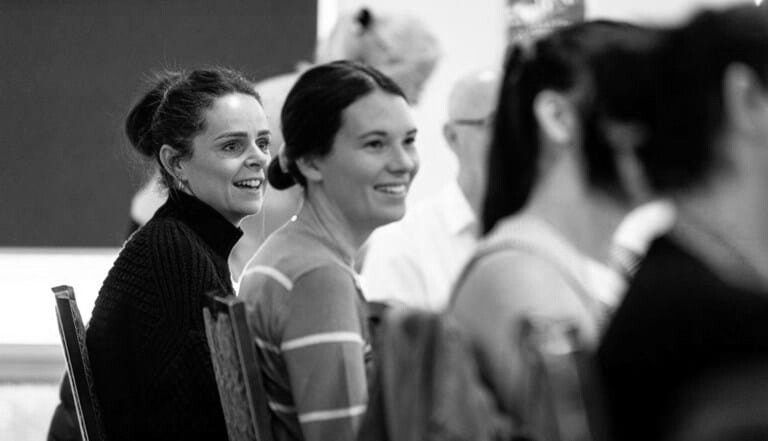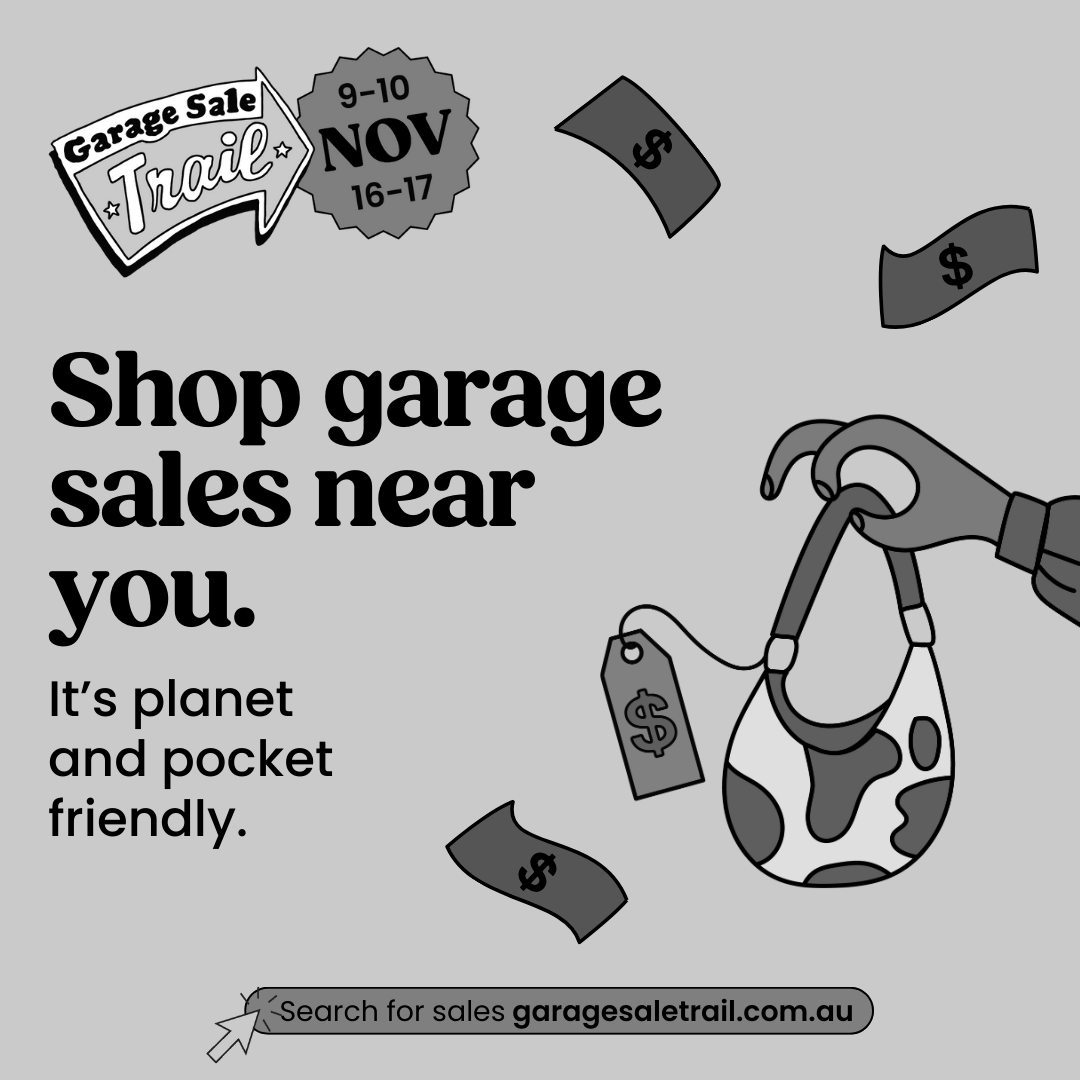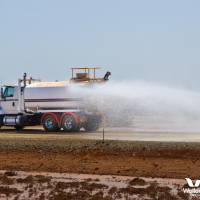We found 172 search results
-
Buy Fair-trade Food and Products
To stop the degradation of the global environment we have to deal with the failings of global trade, namely its tendency to increase poverty and its exploitation of the weak. Buying products labelled 'Fairtrade' is a good start.
Read more about "Buy Fair-trade Food and Products"...
The Fairtrade collection of organisations has developed a Fairtrade Certification Mark. When you find a product that bears this mark, you know that it has been procured through a process that has helped deliver better trading conditions to marginalised produce… -
Promote Sustainable Living
Help spread the word about actions we can all take to reduce our impact on the environment.
Read more about "Promote Sustainable Living"...
It is easy to feel that you're the only one trying to live sustainably, but as you talk to more people, you’ll find that many of us are on the same path. We are all teachers and we are all learners, so share what you know with others and you might just be rewarded by discovering something new yourself!
The more we promote sustainable living, the easier it will be to build sustainable communities.… -
Be a Responsible Pet Owner
Pets give us company, affection and love. But with ownership comes responsibility; to care and nurture them and to minimise their impact on the environment.
Read more about "Be a Responsible Pet Owner"...
Pets can have a profound impact on biodiversity, wildlife and the health of our environment. One only needs to look at the impact rabbits, cats and foxes have had on Australia’s natural systems since they were released into the wild.
Managing our domesticated nature, and pets, in a way that does not further damage those natural systems, bi… -
Recycle Building Waste
Renovating or demolishing a house to build a new one generates up to 200 tonnes of 'waste', but around 80 per cent of this material could be re-used or recycled, saving vast quantities of energy, water, resources and money.
Read more about "Recycle Building Waste"...
Australians produce more than one-and-a-half tonnes of what we call waste per person per year, with 40 per cent of Australia's waste resulting from construction and demolition activities. However up to 80 per cent of this construction waste is actually made up… -
How to Reduce Waste
There are many things you can do around the home, or at work, to minimise the amount of waste you generate and to recover valuable resources through initiatives such as composting and worm farming.
Read more about "How to Reduce Waste"...
Reduce, Reuse, Recycle
Ways to Reduce, Reuse and Recycle
Limit your use of single-use and disposable products and opt for re-usable items
Keep re-usable bags for your shopping
When buying fruit and vegetables, put them in your trolley rather than plastic bags
Donate unwanted clothes, household it… -
Onsite Sewage/Septic
More than half of Wollondilly’s population lives in rural and rural-residential areas, where Sydney Water’s sewer system is unavailable. As such, there are over 8000 on-site sewage management systems installed in the Shire.
Read more about "Onsite Sewage/Septic"...
Most of these systems are septic tanks and aerated wastewater treatment systems (AWTS). Other types of systems include pump-outs, mounds, reed beds, sand filters, biological filtration systems and wet composting units.
Septic Tanks provide anaerobic (‘without oxygen’) treat… -
Farm Dams
Frequently asked questions about the approval and construction of farm dams.
Read more about "Farm Dams"...
What is a Farm Dam?Within the Wollondilly Local Environmental Plan 2011 dams are defined as:
Water storage facility means a dam, weir or reservoir for the collection and storage of water, and includes associated monitoring or gauging equipment.
Note: water storage facilities are part of a water supply system, as defined in the Local Environment Plan.
Frequently Asked Questions -
Smart Telopea Park Buxton Trial
In exciting news for the Buxton community, Wollondilly Shire Council has partnered with OneWiFi & Infrastructure and the NSW Government to trial free public Wi-Fi at Telopea Park in Buxton.
Read more about "Smart Telopea Park Buxton Trial"...
The six month trial also provides a range of 'Smart City’ features including the collection of data which will be available on Council's website. The sensors and gateways are powered by renewable energy (solar and wind power) generated onsite using Aura Renewable Energy assets.
The features wi… -
Waste Management Strategy & Action Plan
Wollondilly Council’s Waste Management Strategy & Action Plan was adopted on 16 March 2021. The Strategy focuses on economically and environmentally sustainable waste management, addressing key areas including:
Read more about "Waste Management Strategy & Action Plan"...
Landfill diversion
Domestic waste collection, processing and disposal
Contamination management in domestic waste bins
Domestic kerbside clean-up services
Illegal dumping
Management of problem wastes such as medical sharps, chemicals, mattresses and e-waste.
View the Strategy a… -
Proposed Road Names – Subdivision of 35 Byron Road Tahmoor
Roads Act, 1993 & Roads Regulation 2018, Part 2, Division 135 Byron Road TAHMOOR NSW, Lot 2 DP 1032620, DD010.2014.00000319.001Notice is hereby given that Wollondilly Shire Council, in pursuance of Clause 7 of the above regulation proposes to name the following road/s:
Read more about "Proposed Road Names – Subdivision of 35 Byron Road Tahmoor"...
Proposed Names: Alma Den Way
Description: A new road within coming off Bronzewing Street & adjoins Lone Lea Street & Byron Road.
Name Origin: (See detailed history below).
Propo… -
Save Paper and Forests
The production of paper uses trees, chemicals, energy (greenhouse gases) and water. About one-third of the garbage we throw away is paper. Let's avoid, reduce, re-use and recycle at work too!
Read more about "Save Paper and Forests"...
About Saving Paper and ForestsThe ecological footprint of a single newspaper was once described as taking up the area covered by all the sheets of the newspaper laid side by side, for the period of a year.
A tonne of paper consumes approximately 20 full-grown trees, over 90,000 litres of water, ov… -
Mayor welcomes funding boost for tourism and rail heritage
Wollondilly Mayor Robert Khan has welcomed a major boost to the Shire’s tourism sector with the commitment of $9.1 million of State Government funding towards the upgrade of the historic Picton to Colo Vale rail line.
Read more about "Mayor welcomes funding boost for tourism and rail heritage"...
The cash injection for this project will assist the area’s recovery from the impacts of the Black Summer bushfires and Covid-19 lockdowns, and will support the continued success of the NSW Rail Museum at Thirlmere.
Mayor Khan said, “The NSW Rail Museum is home to Australia’s bigg… -
Switch off un-used appliances
Switch off un-used appliancesBy switching off equipment when it is not in use, we save energy and money. It is that simple.
Read more about "Switch off un-used appliances"...
Just as we don’t leave our cars idling when not in use, the idea that office equipment and appliances should be idling away on standby in case we need them is a recipe for power wastage and high electricity bills. It is estimated that the power used by office machines in standby mode is 6% of office energy use.
By acting to switch off your un-used appliances, you can recl… -
Use your recycled printer paper twice
Use your recycled printer paper twicePaper, and printing on it, cost money. It consumes resources and could often be avoided.
Read more about "Use your recycled printer paper twice"...
A tonne of paper consumes approximately 20 full-grown trees, over 90,000 litres of water, over 1.2 tonnes of coal and an assortment of chemicals. The greenhouse gas emissions of this tonne of paper are approximately 8 tonnes (with a tonne of recycled paper emitting approximately 2 tonnes of greenhouse gases), according to the Federal Government's 2001 Green Office G… -
Medicine and Sharps Disposal
Residents have access to a number of pharmacies around the Wollondilly that accept the safe and free disposal of sharps and unwanted medicines.
Read more about "Medicine and Sharps Disposal"...
Unwanted and Expired Medicine Disposal
A free collection service operates at all pharmacies for unwanted and expired medications to ensure the safe and the environmentally responsible disposal of these chemicals.
Use the find your nearest pharmacy tool or view the table below.
Sharps Disposal
Council provides a free sharps disposal service at…






